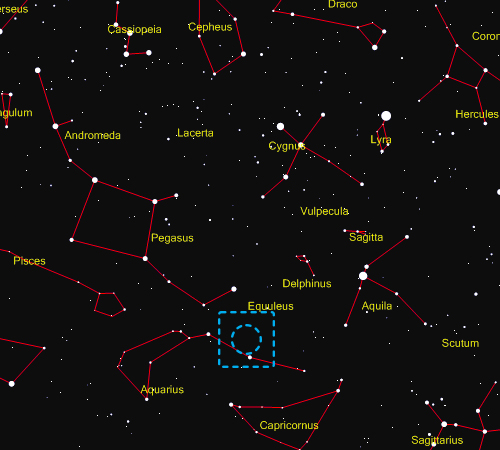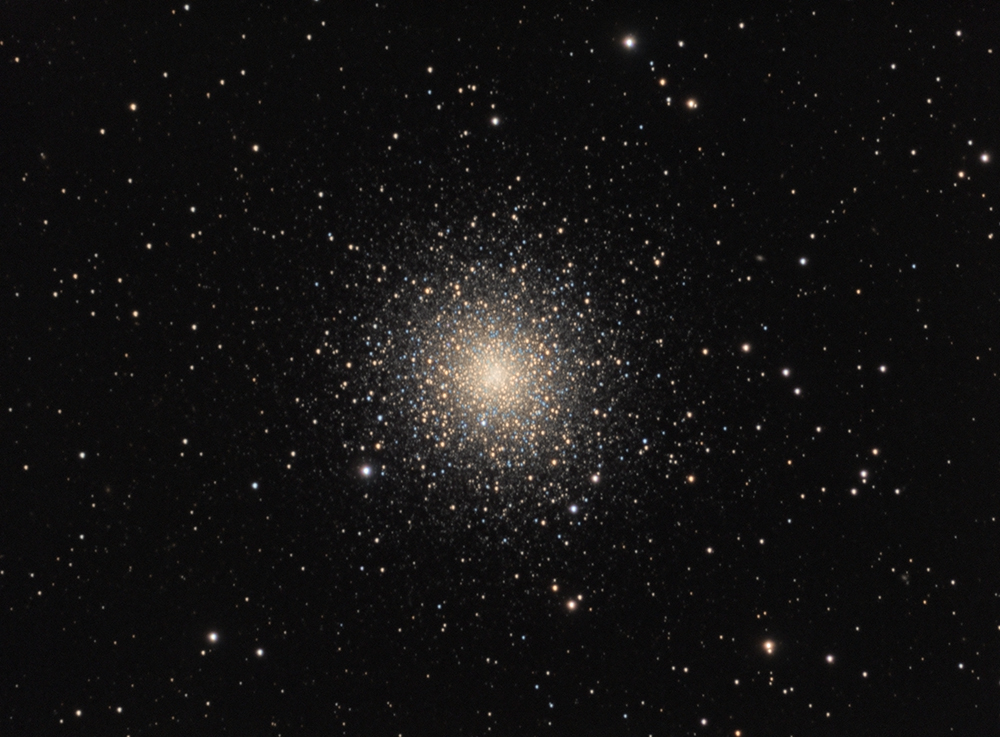Messier 2 is an elliptical globular cluster about 37,000 light years away in the constellation of Aquarius. It is one of the largest globular clusters known in the Milky Way, though the number of stars it contains, around 150,000, is relatively low. Consequently its average density is low for a globular cluster at around 0.04 solar masses per cubic light year. Despite this, M2 has an extremely dense core, with density class II on a scale of I to XII, where XII is reserved for the most diffuse.
It was first discovered on September 11th 1746 by Jean-Dominique Maraldi, but he didn't catalogue it. Fourteen years later to the day, September 11th 1760, Charles Messier discovered it and added it to his catalogue, no doubt annoyed to have not found a comet, yet again! Messier noted that it appeared as a nebula without any stars. It wasn't until 1783, when William Herschel studied the object and was able to resolve individual stars in the cluster, that its true nature was ascertained.
This globular cluster is just about perceptible with the naked eye in particularly good dark and clear conditions. However, when observed through even the smallest of instruments, its fuzzy non-single-star appearance immediately becomes apparent. As the size of observing instrument increases, so the ability to resolve stars within the cluster improves.
Messier 2 is one of the oldest globular clusters orbiting in the galactic halo of the Milky Way. It is believed to be about 13 billion years old, born in the early period of the Universe, which is currently estimated to be 13.8 billion years old. It is thought to have originated from 'The Gaia Sausage', a dwarf galaxy swallowed up by the Milky Way some 10 billion years ago.
This image of Messier 2 is a second attempt at the target. The first attempt, shot in 2017, suffered from poor star shapes as the autofocus routine was confused by the core of the globular cluster. In this version, focus was carried out by pointing at a patch of sky away from the globular cluster itself, resulting in a significantly sharper image with much improved star shapes. |


